Meta Quest 3S vs Meta Quest 3: What should you buy for Black Friday?
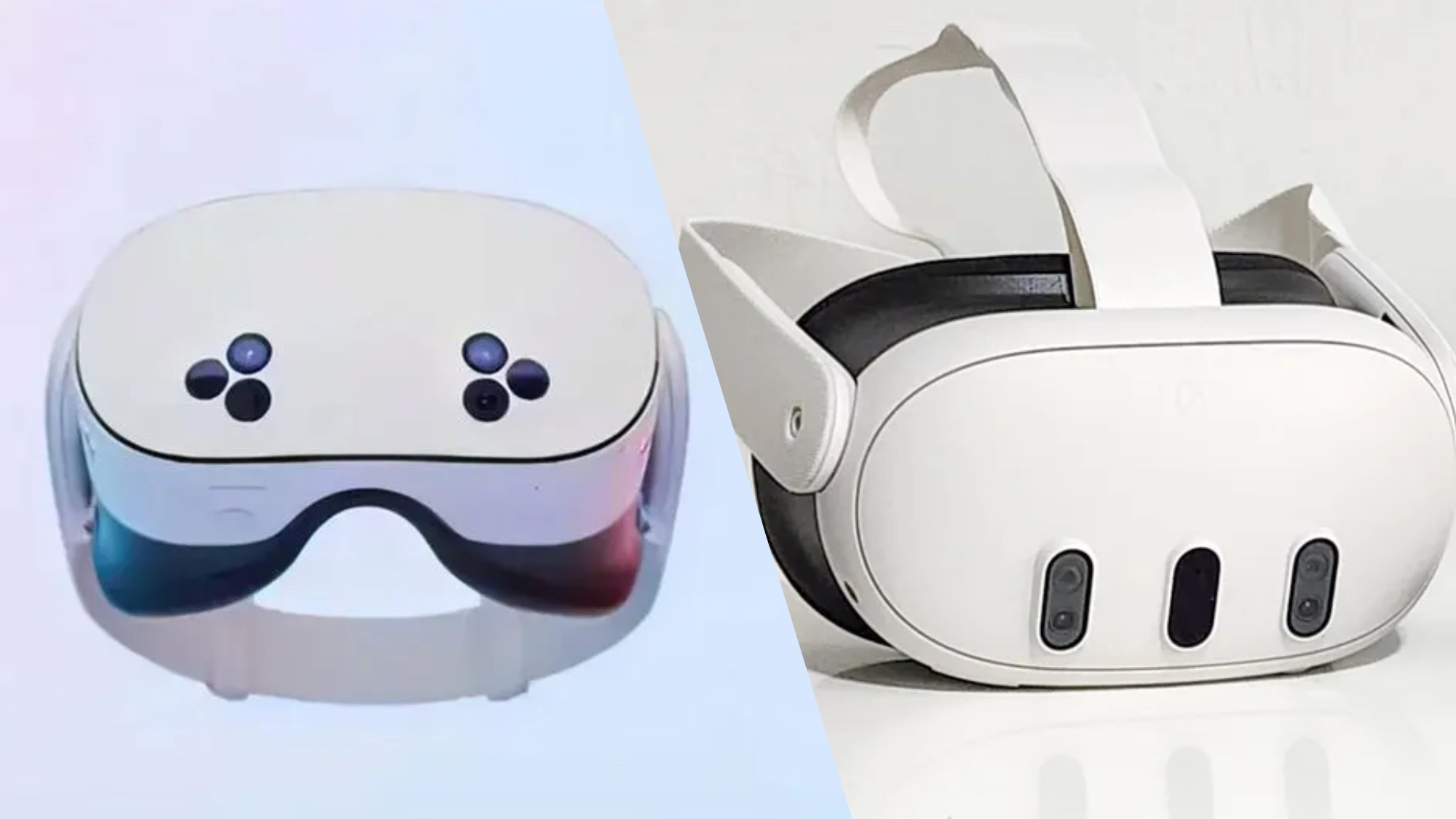
Black Friday is here and if you're considering a headset, you may be looking at the Meta Quest 3 or its new liter sibling the Meta Quest 3S.
In September 2024, Meta revealed the cheaper, liter Meta Quest 3S , a more wallet-friendly version of the Meta Quest 3 during the company’s annual Meta Connect 2024 conference.
The newer Quest 3S is pitched by meta as a less expensive alternative to the Quest 3 in its VR headset lineup. The "S" appears to be being used similarly to how Microsoft markets the Xbox Series S as a cheaper model in its gaming console lineup
At it’s core, the Quest 3S has the guts of the Quest 3 in a slightly revamped body of the Quest 2. With that in mind, should you pick up the “lite” version of the Quest 3?
To help you decide, read on for a Meta Quest 3S vs Meta Quest 3 comparison that highlights the key differences between both headsets.
Meta Quest 3S vs Meta Quest 3: Specs
| Header Cell - Column 0 | Meta Quest 3S | Meta Quest 3 | Meta Quest 3S (256GB model) |
|---|---|---|---|
| Price | $299 | $499 | $399 |
| Chipset | Qualcomm Snapdragon XR2 Gen 2 | Qualcomm Snapdragon XR2 Gen 2 | Qualcomm Snapdragon XR2 Gen 2 |
| Resolution | 1,832 x 1,920 (773 PPI) | 90-120Hz refresh rate | 2,064 x 2,208 pixels per eye | 72 Hz, 90 Hz, 120Hz refresh rate | 1,832 x 1,920 (773 PPI) | 90-120Hz refresh rate |
| Field of view | 96 degrees horizontal | 90 vertical | 110 degrees horizontal | 96 vertical | 96 degrees horizontal | 90 vertical |
| Storage | 128GB | 512GB | 256GB |
| RAM | 8GB | 8GB | 8GB |
| Battery Life | 2.5 hours (rated) | 2.2 hours (rated) | 2.5 hours (rated) |
| Dimensions | 7.5 x 5.6 x 4.0 inches | 7.2 x 6.2 x 3.8 inches | 7.5 x 5.6 x 4.0 inches |
| Weight | 1.1 pounds | 1.1 pounds | 1.1 pounds |
Meta Quest 3S vs Meta Quest 3: Price and availability
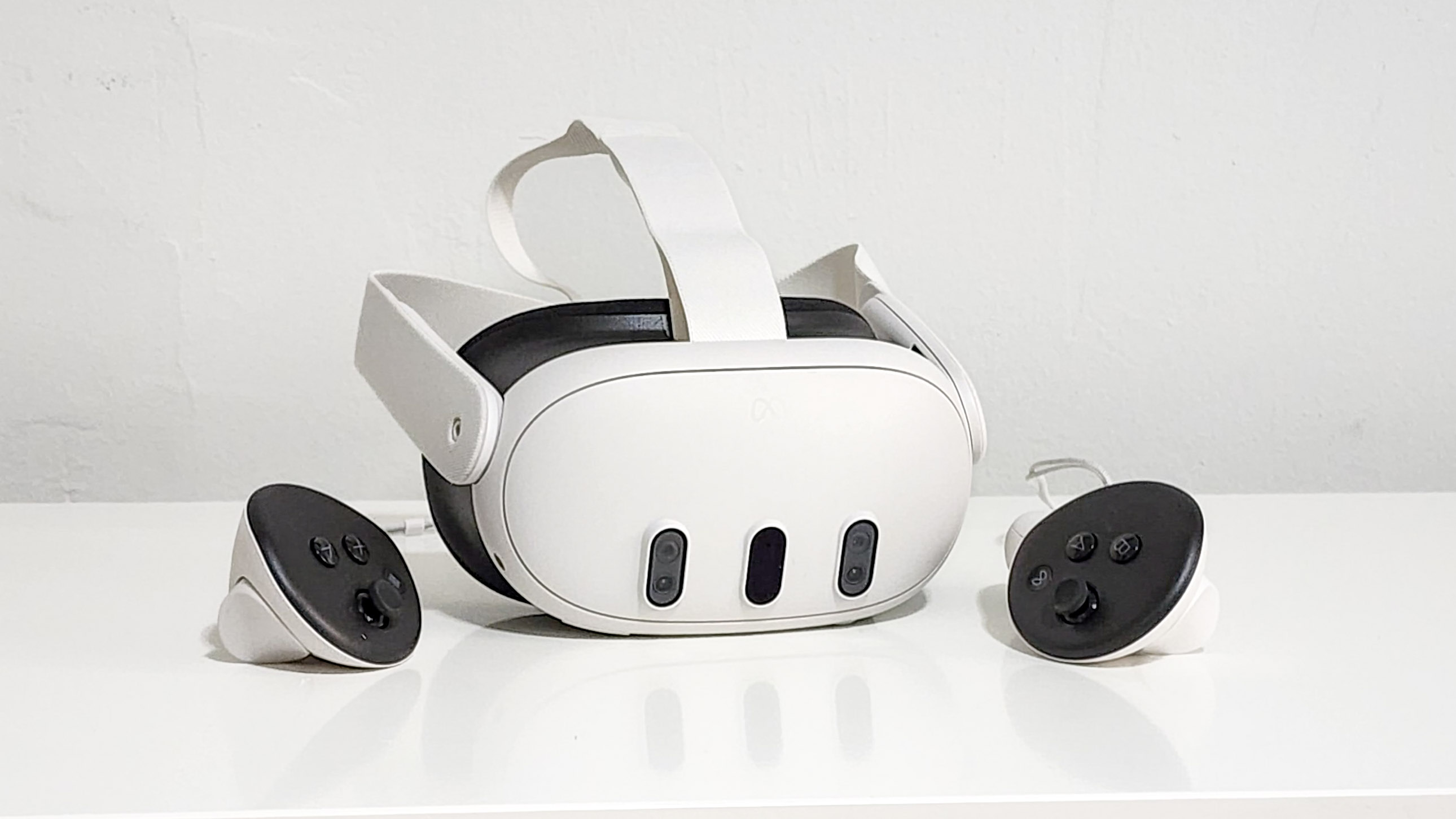
When it launched in 2023, the Meta Quest 3 cost $499 for the 128 GB base version, while the larger 512GB variant jumped in price to $649. With the arrival of the Quest 3S, Meta dropped the 128GB version and only sells the 512GB model with a starting price of $499.
The Quest 3S basically replaced the Quest 2in Meta’s headset lineup and starts at the same price of $299 for the 128GB version. There is also a 256GB variant starting at $399.
Get instant access to breaking news, the hottest reviews, great deals and helpful tips.
Both headsets are now available with the Quest 3S fully launching on October 15.
Meta Quest 3S vs Meta Quest 3: Design and display
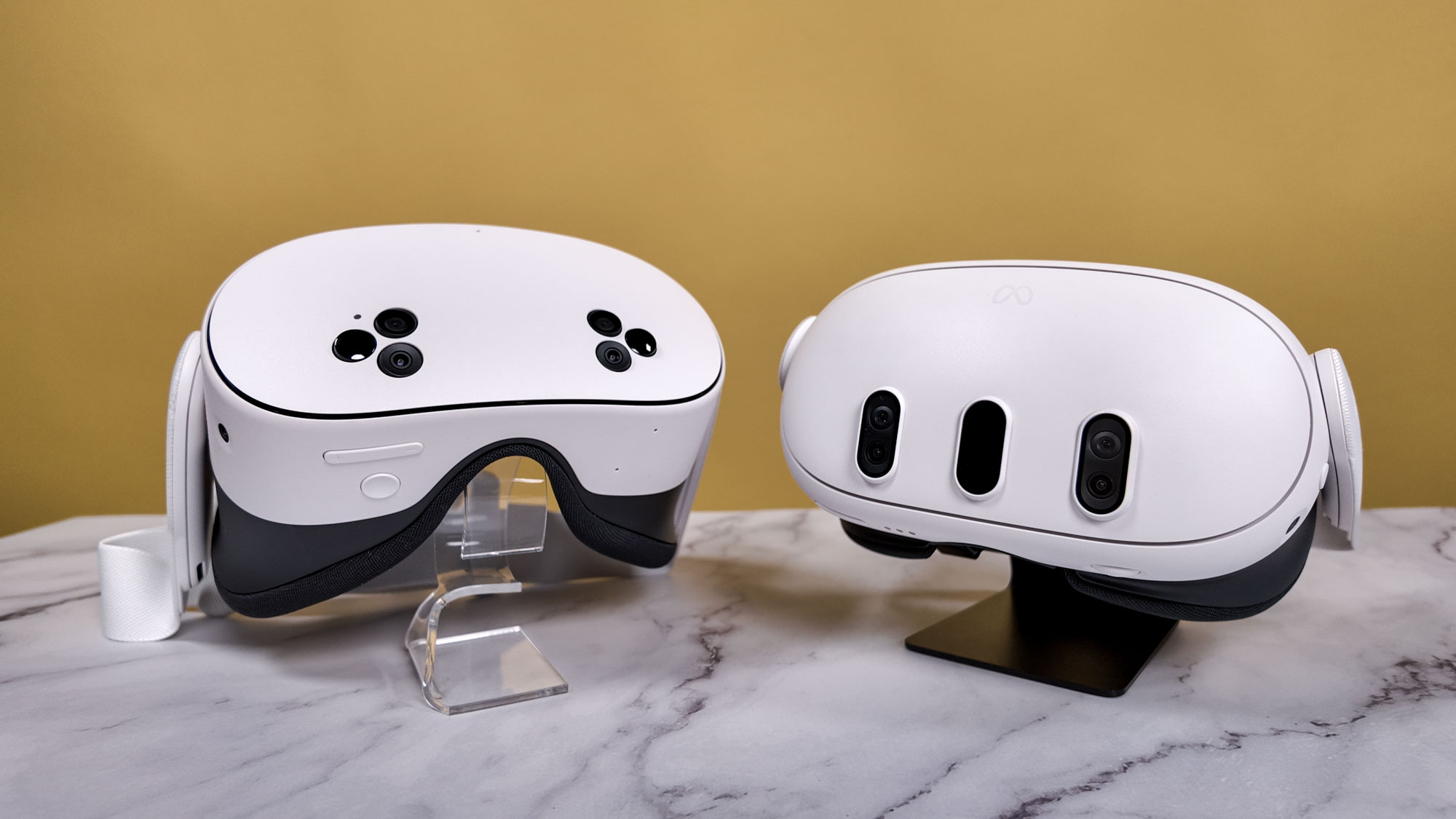
Despite being "redesigned and reimagined," the Quest 3 looked quite similar to the Quest 2. Since the Quest 3S is essentially the Quest 2 with the guts of a Quest 3, there aren’t a lot of differences.
The Quest 3 is 40% smaller than the Quest 2 with the Quest 3 featuring pancake optics to allow for higher resolution lenses in smaller spaces.The Quest 3 features a dual 4MP RGB color camera array with a depth sensor in between them and a 2064 x 2208 resolution. The 3S meanwhile has the same 1832 x 1920 resolution as the Quest 2 with a single LCD panel and a reversion to fresnel lenses, which aren’t as flat. Both devices feature a 90-120Hz variable refresh rate.
The cameras on the Quest 3S reside on the lower left and right sides instead of the three in the middle of the headset like on the Quest 3.
This means that the Quest 3S offers a smaller field of view and a lower resolution. And due to the older body style and lenses, it’s a bit larger and bulkier than the Quest 3. Though they are listed at the same weight of 1.1 pounds.
Additionally, the Quest 3S does not feature an IPD wheel, meaning you can’t finetune how the headset fits like the Quest 3. However, adjusting the straps to accommodate your head is fairly simple. You will likely need the included spacer if you wear glasses.
The Quest 3 features two black buttons for lens adjustement, while the 3S uses the same 3-point lens adjustment as the Quest 2.
Meta changed up the strap designs for the 3 with a y-shape for a secure fit, and the 3S retains that design. Though because the 3S is bulkier, it can make the straps sag more than on the Quest 3.
The 3S also lacks a 3.5mm headphone jack.
Meta Quest 3S vs Meta Quest 3: Controllers
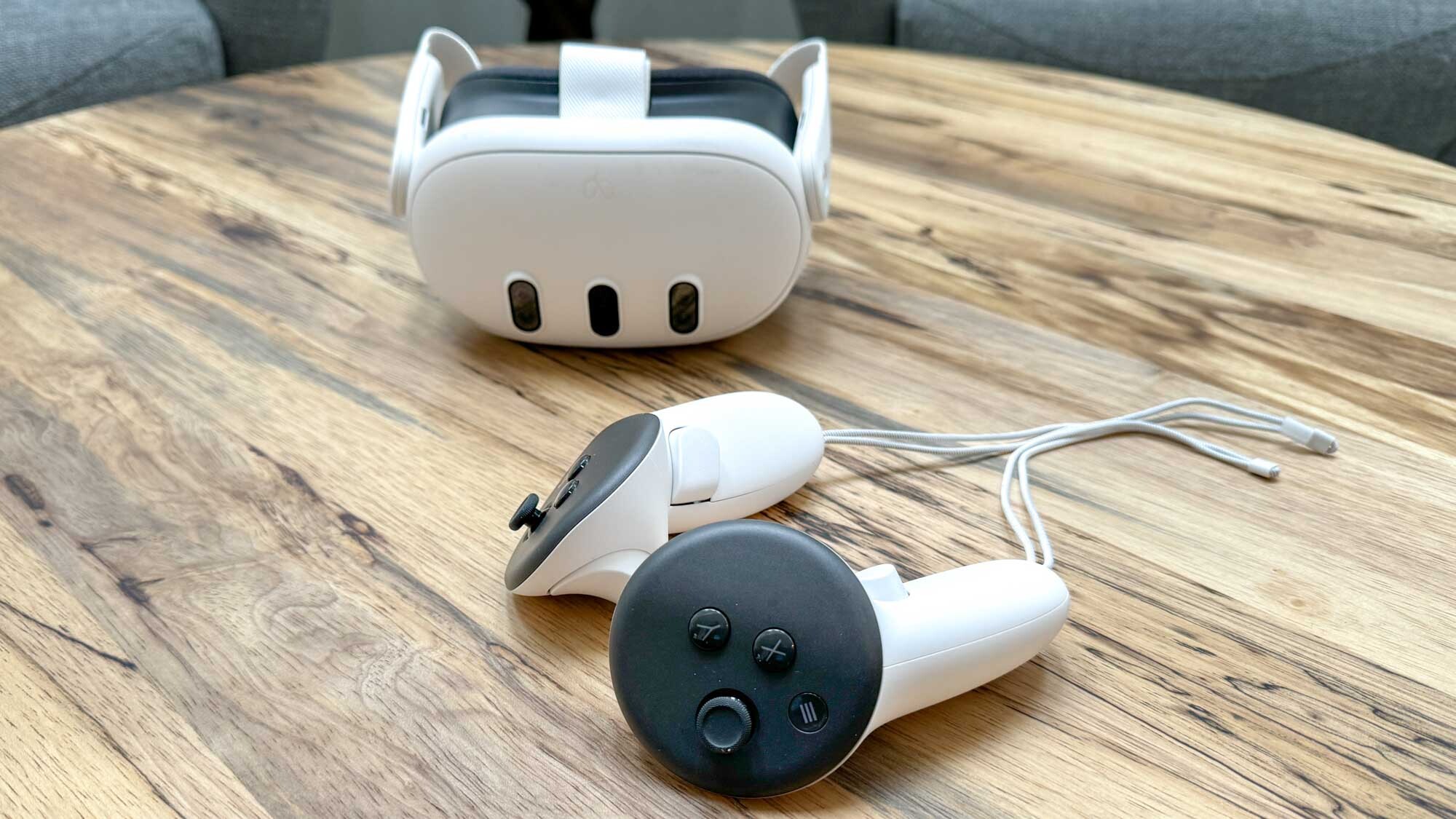
Both the Quest 3 and Quest 3S feature the same Meta Quest Touch Plus Controllers.
In both of our reviews of the headsets, we describe the Touch Plus controllers as one of our favorite things about the headset. “The controllers are great to hold and using them feels intuitive.”
Meta's Touch Plus controllers use AA batteries and feature TruTouch haptics, similar to the Touch Pro controllers and 6DoF tracking.
The controllers can be used for moving screens, gaming, and navigating menus.
Meta Quest 3S vs Meta Quest 3: Performance
As mentioned, the Quest 3S has the guts of the Quest 3 inside, including the same Qualcomm Snapdragon XR2 Gen 2 chipset as its older sibling.
Interestingly, this does give the Quest 3S a slight advantage over the Quest 3, as it features a lower native resolution, meaning more demanding games perform better (though with less visual fidelity).Both devices also feature 8GB of DRAM.
In our testing, we didn’t notice a difference between the two headsets when it comes to performance and gaming.

Meta Quest 3S vs Meta Quest 3: Battery life
Right now, the Quest 3 gives you about 2.5 to 3 hours of play time before needing a charge. When Tom's Guide editor Tony Polanco reviewed the Quest 3, he only got 90 minutes while watching a movie, so mileage will vary depending on how hungry the application is.
The Quest 3S features similar battery life with Meta rating it around 2.5 hours. In his testing, Polanco found that it generally lasted about 2 hours.
Meta Quest 3S vs Meta Quest 3: Games

The Quest 3 is already compatible with the Quest 2 games library, which includes more than 500 games plus new games that have since come out for the Quest 3.
We have seen the Quest 2 pull off newer games like the recently released Batman: Arkham Shadow . Meta has not restricted game or app access for the Quest 3S, meaning it can play all the same games and apps that are available for the Quest 3.
Meta Quest 3S vs Meta Quest 3: Mixed reality features
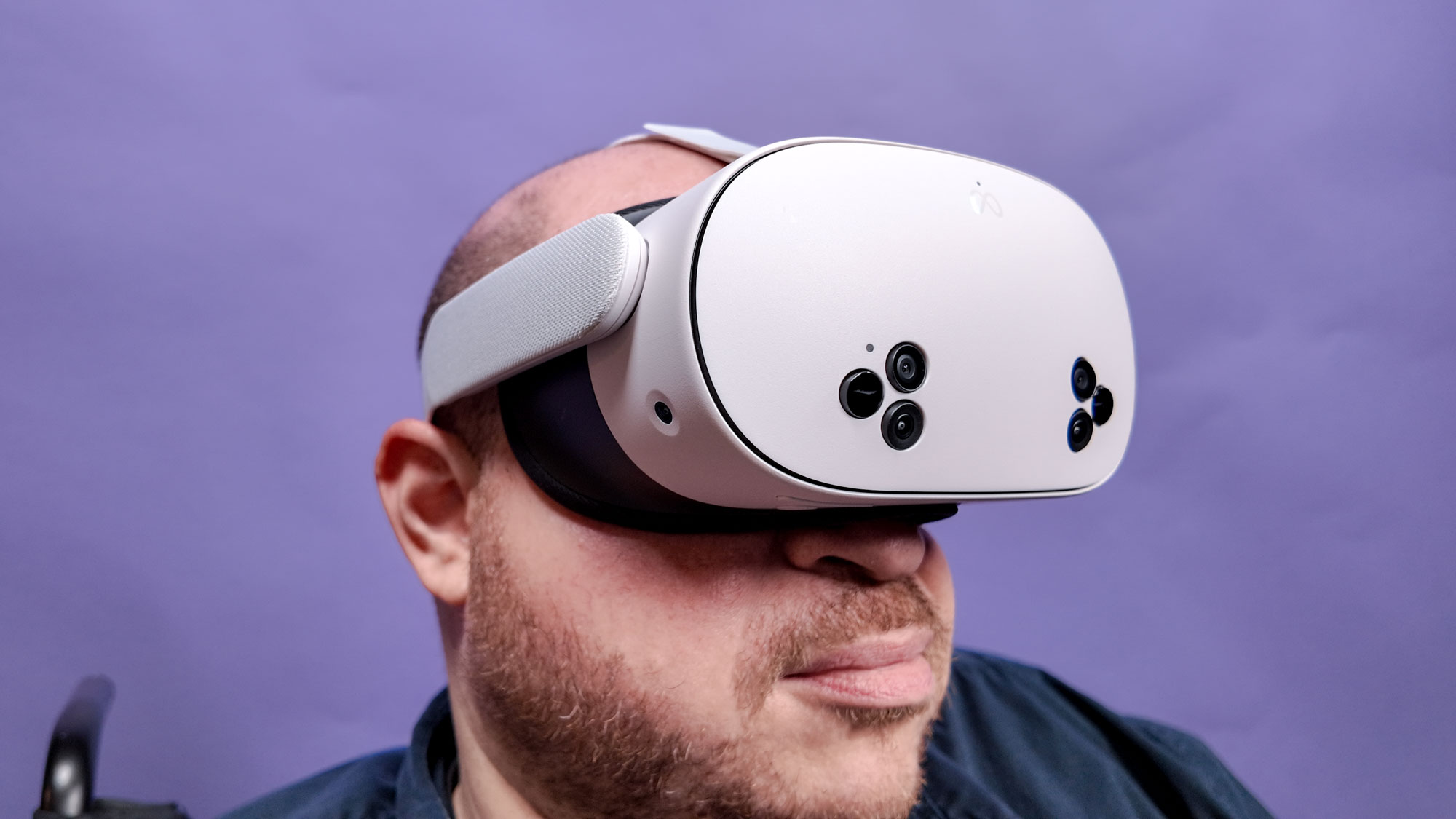
Here is where the biggest difference between the Quest 3 and the Quest 3S should be felt.
At launch, the Quest 3 wasn't quite a mixed reality headset, but with the full-color video passthrough and depth sensor, the Quest 3 was primed to become one and Meta has added features and apps to take advantage of those tools.
The Quest 3S has a color-passthrough but the display and cameras aren’t as robust as the Quest 3. So, it does have the same added features and apps as the Quest 3 but the Quest 3S does offer a slightly diminished mixed-reality experience.
Meta Quest 3S vs Meta Quest 3: Outlook
The Quest 3S totally replaced the Quest 2 as a cheaper entry-level VR headset alternative to Meta's mainline Quest 3, with the high-end Quest Pro completing the headset lineup.
The Quest 3 is one of the best of the virtual reality headsets on the market, so even a slightly reduced version in the Quest 3S should merit strong consideration if you're looking to get into virtual reality. At the lower price, it ranks as one of the best VR headset for most people.
The Quest 3S isn’t as comfortable as the Quest 3, and neither last long on battery, but both offer fast performance, a robust app library and overall great portability.
The Quest 3 offers a slightly more premium experience, but at the lower price, the Quest 3S is an ideal choice and the best VR headset for the money.
More from Tom's Guide
- I tested Meta Quest 3’s Travel Mode, and it puts Apple Vision Pro to shame
- I spent an hour in the Virtuix Omni One full-body VR rig — here's what it feels like
- The best VR games

Scott Younker is the West Coast Reporter at Tom’s Guide. He covers all the lastest tech news. He’s been involved in tech since 2011 at various outlets and is on an ongoing hunt to build the easiest to use home media system. When not writing about the latest devices, you are more than welcome to discuss board games or disc golf with him. He also handles all the Connections coverage on Tom's Guide and has been playing the addictive NYT game since it released.
